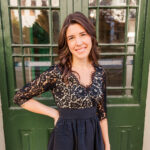This interactive session is designed to support music literacy and promote independent learning through the integration of aural skill development in the choral rehearsal. We will examine trends and address common issues related to sight singing, including instructional strategies, use of time, assessment, financial considerations, student engagement, and the importance of selecting quality choral literature that supports literacy goals. Aural theory should be fun! Session attendees will learn dozens of activities and games to introduce advanced rhythmic and melodic concepts to their choirs. Activities will include simple and compound meter, borrowed rhythms, solfege in major and minor keys, Curwen hand signs, basic conducting, error detection, dictation, and improvisation. All activities can be simplified or made more challenging to meet students where they are and keep them on their toes! Attendees will receive an extensive handout of materials that they can use as soon as they return to their classrooms. We will discuss the challenges of individual assessment in the context of the choral rehearsal, and the session will provide various assessment strategies, resources and rubrics to facilitate constructive and timely student feedback. Additionally, attendees will experience multiple sight-reading strategies using choral scores from various time periods found exclusively in the Choral Public Domain Library, www.cpdl.org, allowing singers to access materials online at school or at home instantly and for free. Reinforcing aural skill development through repertoire creates enriching and artistic experiences for singers, increases the amount of class time spent on literacy, allows singers to synthesize concepts, encourages singers to draw connections between different bodies of repertoire, and facilitates independent musicianship and self-confidence. Access to a free anthology of hand-selected pieces will be provided that may be used for pedagogically sequenced daily sight singing as well as concert performance, and the volume of literature allows for new sight-singing experiences every day of the academic year.
Integrating Aural Theory in the Choral Rehearsal
×


Lauren Whitham
Western Kentucky University
Dr. Lauren Whitham serves as Associate Director of Choral Activities at Western Kentucky University, where she directs the University Singers and Treble Chorus, and teaches music education and aural theory courses. In addition to university teaching, Dr. Whitham has considerable public school teaching experience working with K-12 students. Her choirs were invited to perform at NAfME Conferences in Washington State in 2008, 2010, and 2014, and in Kentucky in 2020 and 2021. Dr. Whitham earned her bachelor’s degree from Pacific Lutheran University, her master’s degree from Western Washington University and her Doctorate of Musical Arts from the University of Georgia.


